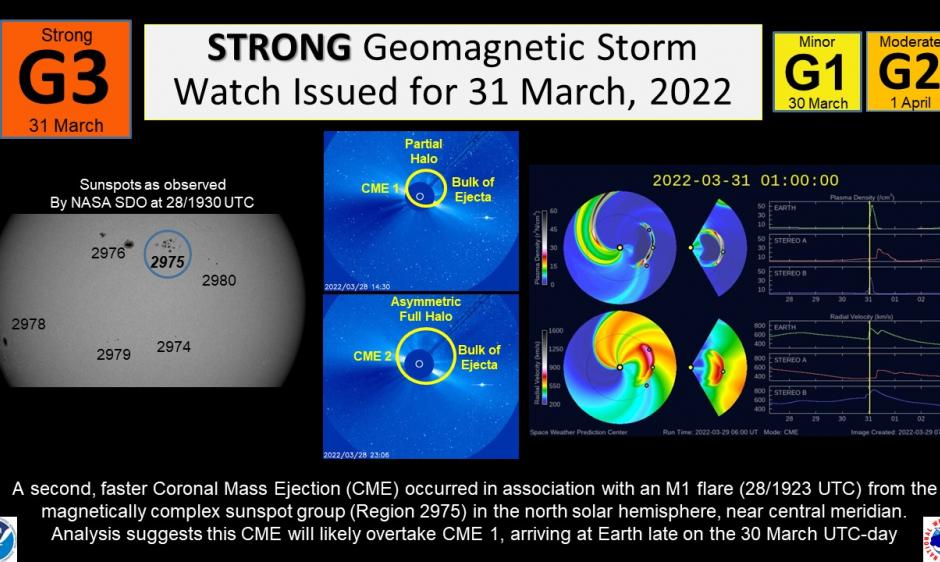Ah, the Sun! The giant nuclear reactor in the sky that gives us light and heat. And… charged particles!

A Coronal Mass Ejection is headed toward earth and will collide with out magnetic field starting tomorrow. A G3, “Strong Geomagnetic Storm Watch” has been issued from NOAA Space Weather.

Impacts to technology from a G3 storm, according to NASA, are “generally small,” but the neat thing is that it makes the Aurora visible farther south. For example, it may be visible over the northern tier of the United States if the sky conditions are favorable.
You might be thinking, Is this like a Solar Flare? Sort of.
Solar flare activity on the sun happens all the time. At times solar flares can burst out and send a stream of plasma toward Earth. But it isn’t the same as a Coronal Mass Ejection.
From NASA:
There are many kinds of eruptions on the sun. Solar flares and coronal mass ejections both involve gigantic explosions of energy, but are otherwise quite different. The two phenomena do sometimes occur at the same time – indeed the strongest flares are almost always correlated with coronal mass ejections – but they emit different things, they look and travel differently, and they have different effects near planets.
Both eruptions are created when the motion of the sun’s interior contorts its own magnetic fields. Like the sudden release of a twisted rubber band, the magnetic fields explosively realign, driving vast amounts of energy into space. This phenomenon can create a sudden flash of light — a solar flare.
The magnetic contortions can also create a different kind of explosion that hurls solar matter into space. These are the coronal mass ejections, also known as CMEs. One can think of the explosions using the physics of a cannon. The flare is like the muzzle flash, which can be seen anywhere in the vicinity. The CME is like the cannonball, propelled forward in a single, preferential direction, this mass ejected from the barrel only affecting a targeted area.
Since the two are related but different they have different impacts on the Earth. A solar flare, if strong enough, can disrupt radio waves. And radio waves are things like, radio reception, tv reception and other FM devices. This can lead to, “temporary blackouts in navigation and communications signals” when things are at their worst, according to NASA..
Coronal MAss Ejections, though, can funnel particles into near-Earth space and even poke at Earth’s magnetic fields. When the particles from the Coronal Mass Ejection interact with oxygen and nitrogen in the atmosphere, they can glow in the sky – giving us the Aurora. Hooray!
But, the magnetic changes from the Coronal Mass Ejection can also mess with higher frequency radio waves. This means problems for radios, GPS, and the entire electrical itself. Bad Coronal Mass Ejections have been estimated to have the potential to overload electrical systems when power companies are not prepared.

